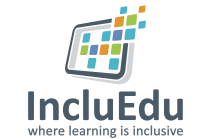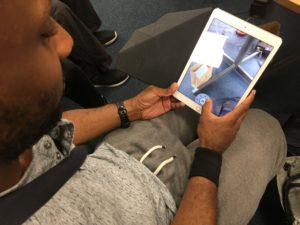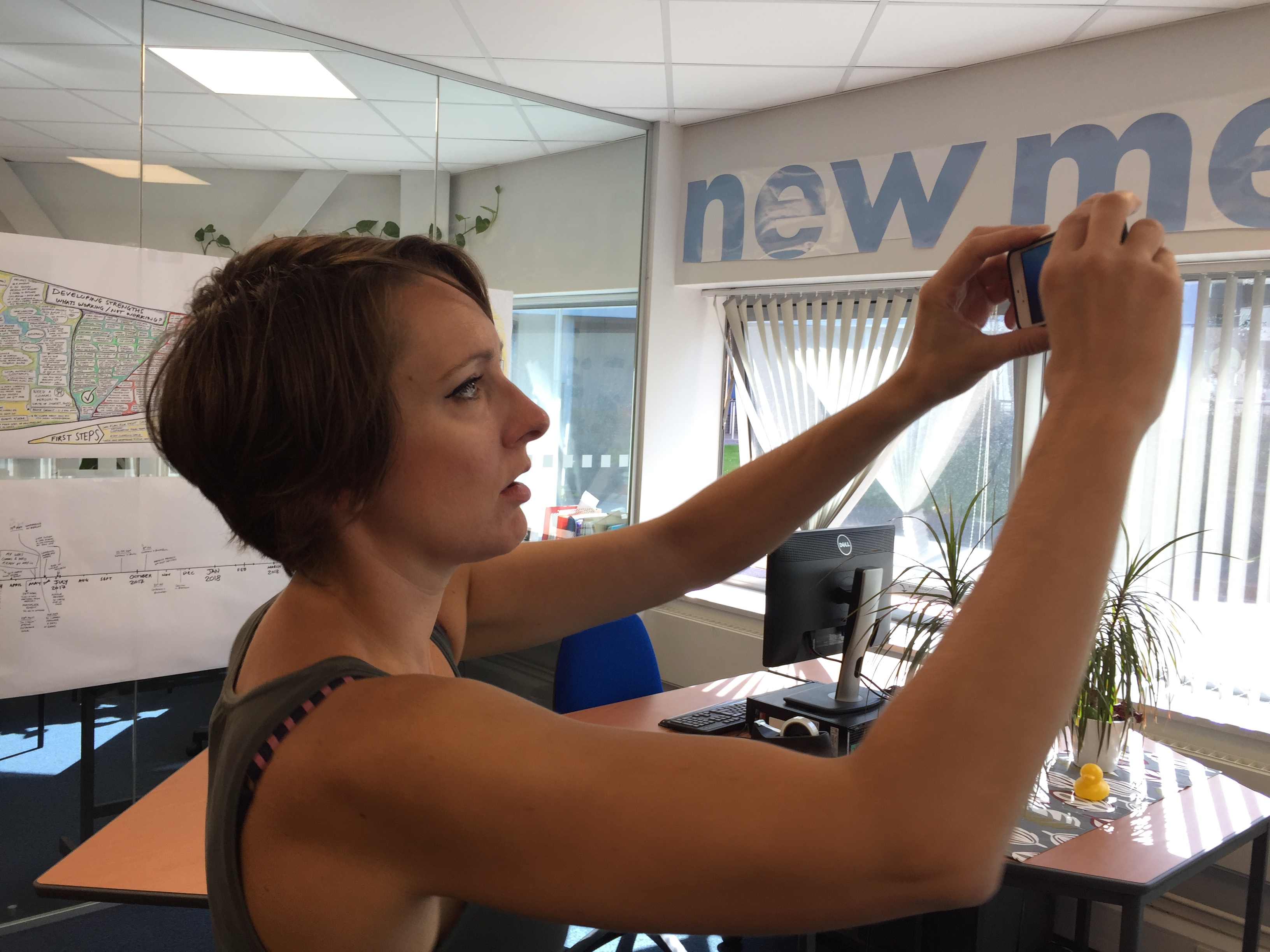WHAT DID YOU DO?
I had read about Edgar Dale’s cone of learning theory, which says that after 2 weeks...'We remember only 10% of what we read, but 90% of what we experience.' I read about 360 degree videos and decided to try using these videos as part of teaching the group about specific topics. I also wanted to use the 360 degree videos to help the learners think about capturing stories and history in a different way. They were able to feel as though they were personally exploring far off locations (like Africa, Space, the Ocean) and different time periods (the 2nd World War) themselves. We also discovered some 360 degree videos that immersed you in the day to day life experiences of a person suffering with dementia. This was really interesting for the group as they are learning how to dramatically convey the experiences of people with stayed in long-stay institutions, so it gave them lots of ideas for doing this through video and using 360 degree photos. I then encouraged the group in discussions to think about this in terms of journalism and storytelling. With the freedom to ‘look around’ what kind of thing caught their attention? What did this make them think about the unseen viewpoint? How immersing themselves in these experiences make them feel?
I had read about Edgar Dale’s cone of learning theory, which says that after 2 weeks...'We remember only 10% of what we read, but 90% of what we experience.' I read about 360 degree videos and decided to try using these videos as part of teaching the group about specific topics. I also wanted to use the 360 degree videos to help the learners think about capturing stories and history in a different way. They were able to feel as though they were personally exploring far off locations (like Africa, Space, the Ocean) and different time periods (the 2nd World War) themselves. We also discovered some 360 degree videos that immersed you in the day to day life experiences of a person suffering with dementia. This was really interesting for the group as they are learning how to dramatically convey the experiences of people with stayed in long-stay institutions, so it gave them lots of ideas for doing this through video and using 360 degree photos. I then encouraged the group in discussions to think about this in terms of journalism and storytelling. With the freedom to ‘look around’ what kind of thing caught their attention? What did this make them think about the unseen viewpoint? How immersing themselves in these experiences make them feel?
HOW DID YOU DO IT?
I installed the YouTube App on the learners’ iPads. I then searched YouTube for educational 360 degree videos related to the topics we were covering (see this playlist). The current YouTube App supports 360 degree videos, so if you watch a video using the App on your iPad or tablet the view you have of the video will change according to where you move the device. This means you are free to look up or down, to the left or right. We watched videos about subjects we were learning about in each session. Each learner watched the videos on their own iPads so that they each had control over where they looked and how they personally experienced that video. I also installed an App called Twister on their iPads so that they could use the App to take their own 360 degree photos. Note: We didn’t do this but will try this soon. To make the virtual reality experience of viewing 360 degree videos even better you can use a Google Cardboard or similar viewer, which is a very cheap (around £12 – £25) way to turn your phone into a VR headset:
I installed the YouTube App on the learners’ iPads. I then searched YouTube for educational 360 degree videos related to the topics we were covering (see this playlist). The current YouTube App supports 360 degree videos, so if you watch a video using the App on your iPad or tablet the view you have of the video will change according to where you move the device. This means you are free to look up or down, to the left or right. We watched videos about subjects we were learning about in each session. Each learner watched the videos on their own iPads so that they each had control over where they looked and how they personally experienced that video. I also installed an App called Twister on their iPads so that they could use the App to take their own 360 degree photos. Note: We didn’t do this but will try this soon. To make the virtual reality experience of viewing 360 degree videos even better you can use a Google Cardboard or similar viewer, which is a very cheap (around £12 – £25) way to turn your phone into a VR headset:
WHY WERE TABLETS USED/WAS IT BENEFICIAL?
Although you can watch 360 degree videos and photos using PCs with the latest version of Chrome, we choose to use handheld devices because this greatly increased the personal interaction each learner had with the content. Also you can take 360 degree photos using handheld iPads or tablets.
- Learners felt like they had much more interaction with the content and could choose what they wanted to look at. They found this really exciting.
- Massively improved the learners’ engagement with the subject matter because it felt more like they were ‘experiencing’ what they saw in virtual reality, rather than just watching or reading.
- Learners remembered more of what they saw and were more engaged in discussions
- Helped learners understand the concept and importance of viewpoint in history, as each of them experienced the videos differently.
- Helped them understand quite sophisticated ideas about the seen vs the unseen in media content.
- Improved their storytelling skills
- Using 360 photos improved way they presented information
Although you can watch 360 degree videos and photos using PCs with the latest version of Chrome, we choose to use handheld devices because this greatly increased the personal interaction each learner had with the content. Also you can take 360 degree photos using handheld iPads or tablets.
- Learners felt like they had much more interaction with the content and could choose what they wanted to look at. They found this really exciting.
- Massively improved the learners’ engagement with the subject matter because it felt more like they were ‘experiencing’ what they saw in virtual reality, rather than just watching or reading.
- Learners remembered more of what they saw and were more engaged in discussions
- Helped learners understand the concept and importance of viewpoint in history, as each of them experienced the videos differently.
- Helped them understand quite sophisticated ideas about the seen vs the unseen in media content.
- Improved their storytelling skills
- Using 360 photos improved way they presented information
HOW DID IT SUPPORT INCLUSIVE TEACHING?
This group of learners with learning difficulties can lose focus very quickly and become distracted easily by other conversations. They can also find it hard to think outside of their own experiences and routines. The 360 degree videos and photos are more engaging for everyone and help everyone to be actively included as they can all engage personally with the content using individual devices.
This group of learners with learning difficulties can lose focus very quickly and become distracted easily by other conversations. They can also find it hard to think outside of their own experiences and routines. The 360 degree videos and photos are more engaging for everyone and help everyone to be actively included as they can all engage personally with the content using individual devices.








